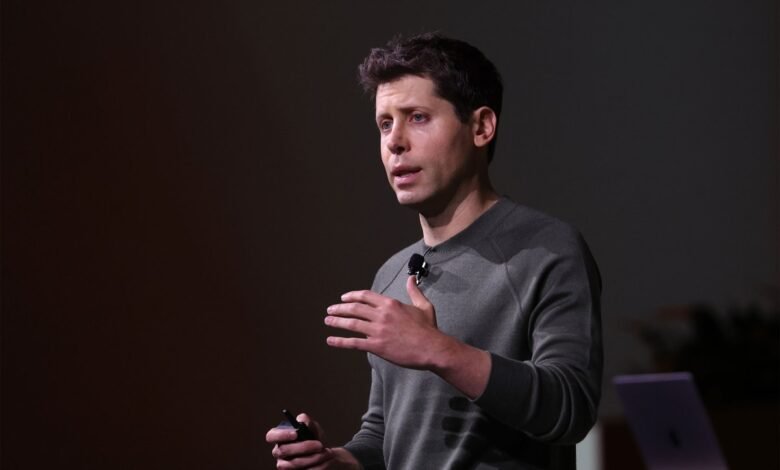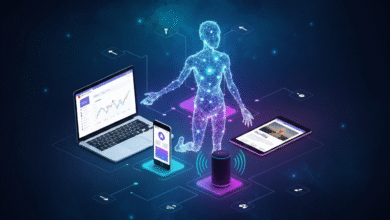OpenAI’s Mission: AI That Can Do Anything for You

▼ Summary
– Hunter Lightman’s MathGen team at OpenAI significantly improved AI models’ mathematical reasoning, leading to a gold medal at the International Math Olympiad.
– OpenAI’s breakthrough in AI reasoning models, like o1, stemmed from combining reinforcement learning, test-time computation, and chain-of-thought techniques.
– Meta recruited five key OpenAI researchers, offering compensation over $100 million, to advance its superintelligence efforts.
– OpenAI’s AI agents excel in well-defined tasks like coding but struggle with subjective tasks, requiring further research to improve versatility.
– OpenAI aims to develop intuitive AI agents that understand user needs without explicit instructions, competing with rivals like Google and Anthropic.
OpenAI’s groundbreaking work on AI reasoning models represents a major leap toward creating intelligent systems capable of human-like problem-solving. When researcher Hunter Lightman joined OpenAI in 2022, he contributed to a quiet but pivotal effort, teaching AI models to tackle high school math competitions. This initiative, known as MathGen, laid the foundation for the company’s advancements in AI reasoning, a core technology behind future AI agents that could perform complex digital tasks autonomously.
Lightman recalls early struggles with mathematical reasoning, where models frequently stumbled. Fast forward to today, and OpenAI’s systems have achieved remarkable progress, one model even secured a gold medal at the prestigious International Math Olympiad. These improvements aren’t just about math; they signal broader potential for AI agents that could eventually handle everything from coding to decision-making.
ChatGPT’s explosive success was unexpected, but OpenAI’s pursuit of AI agents has been deliberate and years in the making. CEO Sam Altman envisions a future where users simply ask a computer for assistance, and AI agents seamlessly execute tasks. This vision hinges on reinforcement learning (RL), a technique that trains models by rewarding correct decisions and penalizing errors. While RL isn’t new, Google DeepMind’s AlphaGo famously used it in 2016, OpenAI has refined its application to develop reasoning models like o1, a breakthrough system introduced in 2024.
The development of o1 involved combining large language models (LLMs) with RL and test-time computation, allowing AI to methodically work through problems before delivering answers. Researchers observed the models correcting mistakes, backtracking, and even displaying what seemed like frustration, behavior eerily reminiscent of human thought processes. These capabilities didn’t emerge overnight; they required years of experimentation, including OpenAI’s early work on GPT models and later innovations like “chain-of-thought” reasoning.
Scaling these reasoning abilities has become a top priority. OpenAI’s approach involves two key strategies: increasing computational power during post-training and allowing models more processing time when answering queries. The company’s “Agents” team, led by Daniel Selsam, played a crucial role in refining these techniques, ultimately contributing to o1’s development. Unlike competitors focused solely on product development, OpenAI’s commitment to artificial general intelligence (AGI) enabled it to prioritize foundational research, yielding breakthroughs that now drive the AI industry forward.
Yet, defining what constitutes AI “reasoning” remains contentious. Some researchers argue that if models produce human-like results, the underlying mechanisms matter less. Others, like Nathan Lambert of AI2, compare AI reasoning to flight, while airplanes don’t flap wings like birds, they achieve the same goal through different means. OpenAI’s stance is pragmatic: if models solve complex problems effectively, debating their exact cognitive processes is secondary.
The next challenge lies in expanding AI agents beyond structured tasks. Current agents excel in well-defined domains like coding but falter with subjective or nuanced requests, booking flights, for example, or negotiating parking. OpenAI believes the solution lies in better training data and more sophisticated RL techniques. Noam Brown, a key researcher behind the IMO-winning model, highlights new methods that enable AI to tackle less verifiable tasks by exploring multiple solutions simultaneously.
Looking ahead, OpenAI aims to simplify AI interactions, eliminating the need for manual settings. The goal? An intuitive agent that anticipates user needs, selects the right tools, and reasons efficiently, transforming ChatGPT into a truly autonomous assistant. However, competition is fierce. With rivals like Google, Anthropic, and Meta making strides in reasoning models, OpenAI must continue innovating to maintain its edge. The race to build the ultimate AI agent is on, and the stakes have never been higher.
(Source: TechCrunch)





